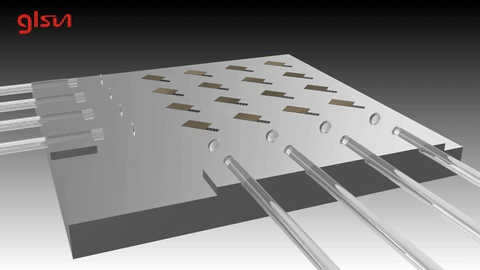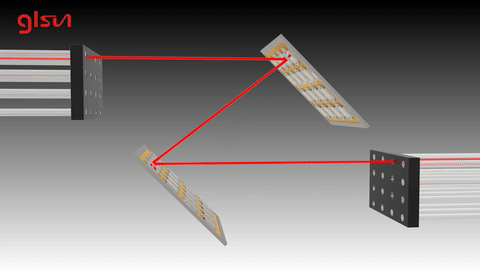2D MEMS Switches vs 3D MEMS Switches
2024-02-07
MEMS (Microelectromechanical Systems) optical switches are devices that use microelectromechanical systems technology to switch light signals between different optical paths. They are typically used in telecommunications and data center applications.
There are two main types of MEMS optical switches: 2D MEMS optical switches and 3D MEMS optical switches.
2D MEMS optical switches have a simple design and are relatively easy to manufacture. They consist of a glass substrate with a thin layer of silicon on top. The silicon layer is patterned with a series of mirrors, which are actuated by electrostatic forces. When an electrical signal is applied to the mirrors, they rotate and reflect the light to the desired output port.

2D MEMS optical switches are available in a variety of configurations, including 1x2, 1x4, and 1x8. They can also be used to switch between multiple wavelengths of light.
3D MEMS optical switches are more complex than 2D MEMS optical switches, but they offer a number of advantages. 3D MEMS optical switches have a smaller footprint and are less power-hungry than 2D MEMS optical switches. They also offer lower insertion loss and crosstalk.
3D MEMS optical switches are made using a more complex process than 2D MEMS optical switches. The process starts with a silicon wafer, which is patterned with a series of trenches. The trenches are then filled with a metal, such as gold or aluminum. The metal is then etched away to form the mirrors. The micro mirror can rotate at any angle along two axes, so it can change the output of the light patch from different angles. These arrays usually come in pairs, with input light arriving on the mirror of the first array being reflected on the mirror of the second array, and then reflected on the output port.

3D MEMS optical switches are available in a variety of configurations, including 1x2, 1x4, and 1x8. They can also be used to switch between multiple wavelengths of light.
What's the difference between 2D MEMS and 3D MEMS Optical Switches?
The following table compares the two types of MEMS switches:
| Feature | 2D MEMS Optical Switches | 3D MEMS Optical Switches |
| Design | Simple | Complex |
| Manufacturing | Easy | Difficult |
| Power consumption | Higher | Lower |
| Insertion loss | Higher | Lower |
| Crosstalk | Higher | Lower |
| Wavelength range | Limited | Unlimited |
MEMS optical switches are used in a variety of applications, including:
* Telecommunications
* Data centers
* Medical imaging
* Industrial automation
* Aerospace
MEMS optical switches are a key component of the optical networking infrastructure. They are used to switch light signals between different fibers and devices. MEMS switches are also used in data centers to connect servers and storage devices.
MEMS optical switches are a promising technology for a variety of applications. They offer a number of advantages over traditional optical switches, such as low power consumption, fast switching speeds, and small size. MEMS optical switches are also more reliable than traditional optical switches, as they are not subject to mechanical wear and tear.







